Today, most of the research scientists disembarked the M/Y Golden Shadow at the conclusion of a very successful research project in St. Kitts and Nevis. As they walked down the pier, we welcomed 23 students and 4 chaperones from St. Kitts and Nevis who boarded the ship for an outreach day cruise. The 14 students from St. Kitts attend the Clarence Fitzroy Bryant College and are studying various aspects of science in order to earn an Associate’s degree. Some are studying medicine, some environmental science, and others are directly involved in marine science and are familiar with coral reef ecology. The 9 youths from Nevis were representatives of the Nevis Tourism Youth Council (NTYC). The outreach day cruise began promptly at 10:30AM with departure from port. The students were able to view the action from the Bridge Deck.

At this time, the ship’s First Officer, Will Thomas, led a safety briefing and our Executive Director, CAPT Phil Renaud, gave an introduction to the Khaled bin Sultan Living Oceans Foundation.
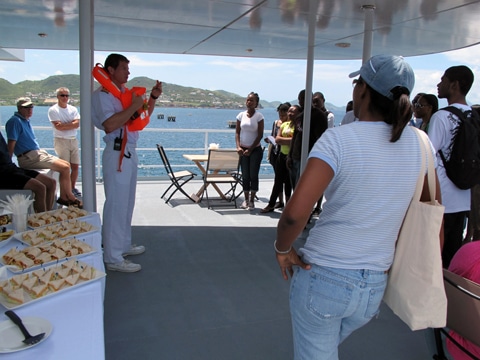
We split the groups in half and held concurrent sessions on coral reef ecology (led by Dr. Andy Bruckner, our Chief Scientist) and maritime careers, which involved an officer, engineer, the doctor and Living Oceans Foundation staff members. The students asked many questions about the maritime careers and the session opened their eyes to many career opportunities in the maritime industries.
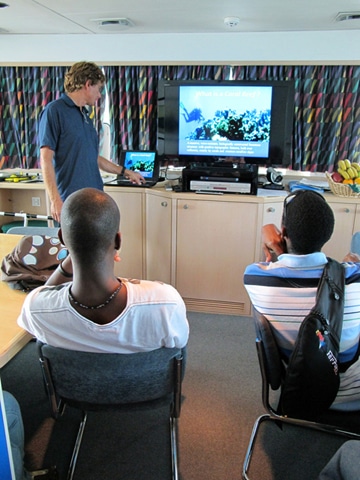
Captain Steve Breen expertly piloted the ship to a protected area off the coast of Nevis, where the outreach day cruise anchored for the afternoon.
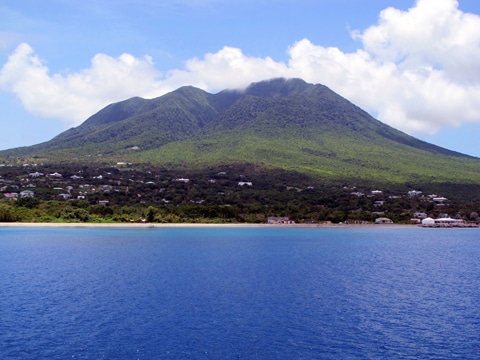
Our Executive Director and Chief Scientist led ship tours to give the students a sense of what it’s like living on a ship. It can be difficult to imagine living at sea, but the great crew of M/Y Golden Shadow gave professional briefings on various shipboard equipment and operations. The Bridge, emergency doors, engine room and dive locker were certainly the highlights of the tour.
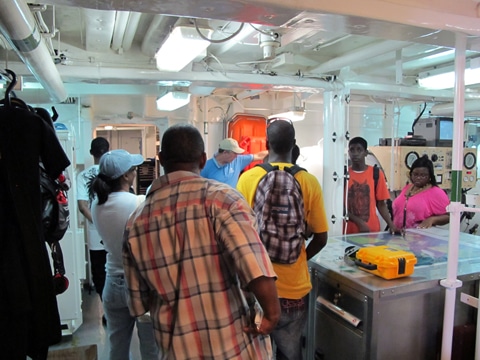
Though it was a very hot afternoon, the students enjoyed the BBQ on the back deck with mouth-watering food provided by the ship’s excellent chefs and stewards. One student commented he must have gained 10 pounds just from lunch because he enjoyed it so much!
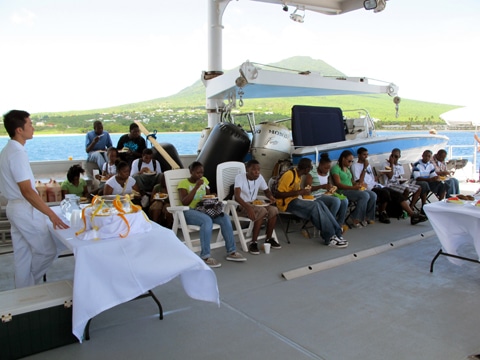
For the remainder of the afternoon, the Living Oceans Foundation staff members conducted a scuba demonstration on the stern elevator. First, the powerful stern elevator, used for launching the small boats and Golden Eye Cessna floatplane was demonstrated to the students. Our Executive Director (and resident scuba instructor), discussed all of the necessary items for scuba diving while Amanda demonstrated setting up a scuba unit and donning it properly. None of the students were certified scuba divers, but we hope that we peaked their interest to become certified. We then demonstrated our diver propulsion vehicles and discussed the benefits to having underwater scooters on-board for research use in conducting rapid reef assessments.
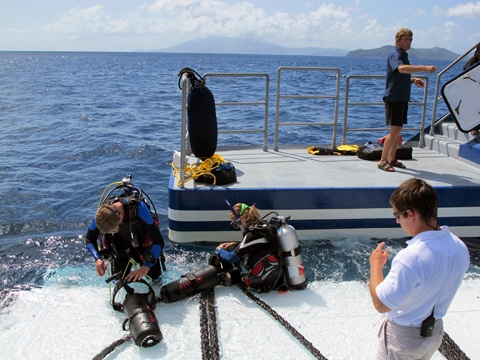
The last scuba demonstration of the day involved use of our full face masks for underwater education. Andy operated the surface base station to communicate with the divers as they performed underwater tasks. A spare face mask was passed around by the students so they could try it on and get an experience of what it is like to dive with this technology.
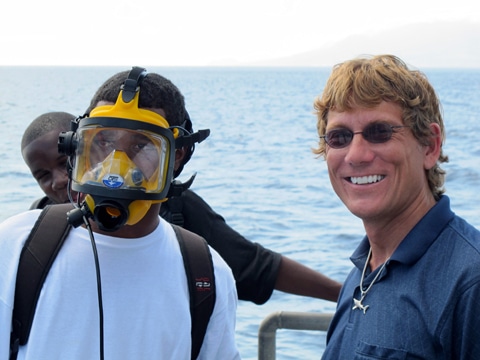

Using the Surface Communications Station, Dr. Andy Bruckner asked the divers about the descent and what their depth was. He asked the divers to describe what they were observing about the reef below the ship. Amanda described the reef conditions and some unique characteristics she noticed, such as any evidence of coral bleaching, the fish life, and macroalgae on the reef. Andy instructed the divers to retrieve the temperature meter that had been placed on the reef, so the students would be able to see some of the instruments used in marine science. Before ascending, students were given the opportunity to ask the scuba divers questions from the surface about what they were seeing.
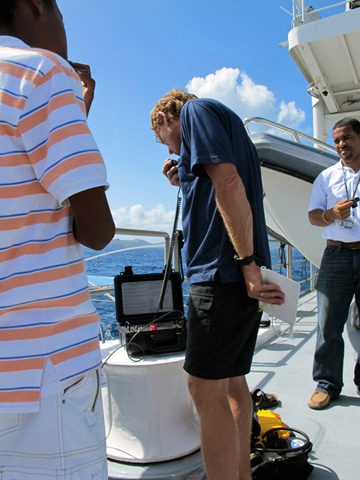
Andy also demonstrated the YSI CTD (conductivity, temperature and depth) device and discussed how understanding marine chemistry is important in understanding reef systems since water quality is highly related to reef functions.
Prior to weighing anchor, the Nevis participants were transported via the small catamaran back to shore in Charlestown. The St. Kitts students were able to watch operations as the small cat and RHIB (rigid hull inflatable boat) were retrieved using the stern elevator. The students were excited and appreciative of the opportunity to come aboard our ship for the day. We were very glad to have had the opportunity to be able to interact with these students and have the chance to provide some maritime career inspiration.

This outreach day cruise marked the end of our 2 week research expedition in St. Kitts and Nevis, which was the 2nd leg of the Global Reef Expedition. Having established two permanent legacy sites, we hope to return someday to monitor the status of these reefs, in hopes that the coral reefs and all the life they sustain willcontinue to grow and reproduce. We are very grateful that the Government of St. Kitts and Nevis and local citizens welcomed the Living Oceans Foundation and the M/Y Golden Shadow into their beautiful country. We have made many new Kittitian and Nevisian friends and hope to see them all again soon. Best wishes, until next time, from the Khaled bin Sultan Living Oceans Foundation!
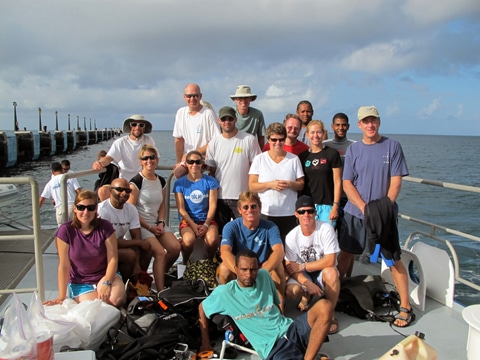
(Photo/Images by: 1-6 Amanda Williams; 7-11 Dr. Phil Hombre, 12 Georgina Evans)
To follow along and see more photos, please visit us on Facebook! You can also follow the expedition on our Global Reef Expedition page, where there is more information about our research and our team members.